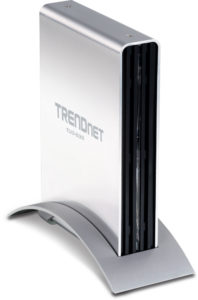As many of you may know, the next release of Ubuntu, 10.10 (Code Named “Maverick Meerkat” is slated to be released on the 10th of October 2010. (For you math and/or Sci-Fi geeks, 10.10.10 translates to “42” which, as we all know from having seen/read “The Hitch Hiker’s Guide To the Galaxy”, is the answer to everything.) In this article, we’re going to go over what’s new in this release.
The Linux Kernel:
This release will feature a kernel based off version 2.6.35. As usual, it will contain bug fixes to both the core kernel as well as it’s modules. (for those not familiar with that term, they’re drivers) As well the introduction of new features. For all of you ATI users, the kernel now further supports the power saving profiles for these cards. For you Intel graphics users, myself being included, they didn’t forget about you guys either. The driver now includes everything needed to support the streaming of H.264 on the Iron lake CPU, which has graphics support built in. Also included, are the user-land tools to make all this happen. For those interested, please check out the Intel site at http://intellinuxgraphics.org/h264.html.
For any new File System support, the only thing I’ve really seen worth mentioning is that Btrfs now supports Direct I/O access, thus effectively bypassing the kernel cache which can be especially useful for those of you running databases that include integrated cache functions.
With regards to networking, the Atheros AR7010 and AR9271 chipsets are now officially supported by the kernel with the addition of the ath9k_htc driver. Along with the addition of the ath9k_htc driver, additional improvements have been made to the ath5k driver which will allow for better connection speeds and faster throughput in RF Noisy areas. Another addition for Intel is an experimental driver which will allow the kernel to directly control various aspects of Intel CPU control mechanisms which will help those who have a shoddy ACPI control interface in the BIOS.
Moving on to other enhancements of the kernel. Virtualization enhancements include one for the Linux KVM interface which will allow users to check up on a guest OS’s status from the host via the “perf” command. Other enhancements in this area are mainly improvements over existing technologies.
In the area of sound support, the ALSA sound drivers have not been neglected. ALSA now supports the ASI sound cards produced by AudioScience.
There have also been other additions to the kernel and the toolchain and related items this time around but for the sake of time, I’m going to go head and end this part of the article here. Thanks to those of you who held with me for this long. And as always, thanks to the kernel.org team for doing such fine work.
GNOME
The plan for this release was to have finally migrated away from the 2.x line of GNOME to the new GNOME 3.0 desktop environment. However, due to issues out of the control of the Ubuntu developers, Gnome 3.0 will not be included with this release. The version of GNOME that will be included with Ubuntu 10.10 will 2.31.92, which, as I understand, will also be the final release of the GNOME 2.x line before retirement… That is if everything goes according to plan.
Say Goodbye to Firefox and F-Spot
Ubuntu 10.10 will no longer include the Mozilla Organization’s Firefox web browser by default though it will still available in the appropriate repository if you would like to install it afterward. The browser intended to replace Firefox will be chromium, which is the open source cousin to Google’s Chrome web browser. The reason stated for this change is that chromium is by far faster, thus further improving the overall speedy experience that 10.10 will surely be. Also out for this release is the F-Spot photo management software in favor for the Shotwell Photo Manager.
Even Faster Boot Time
As always, the Ubuntu development team is constantly seeking ways to increase the boot time speeds. With the addition of version 2.6.35 of the Linux Kernel and the usual improvements to upstart, that should turn out to be interesting. My personal system on which I’m writing this article currently has Ubuntu 10.10 installed and my boot time is around 9 seconds. Try to beat that, Windows.
In The End
While I’m sure I’ve forgotten some things for this article I can assure you that this release is going to turn out to be a good one. It is sure to meet or exceed the high expectations that Ubuntu often sets for themselves and the rest of the community. I would like to thank Andy and the team at Tech Talk Radio for allowing me to make this contribution and I most certainly look forward to future posts.


You must be logged in to post a comment.